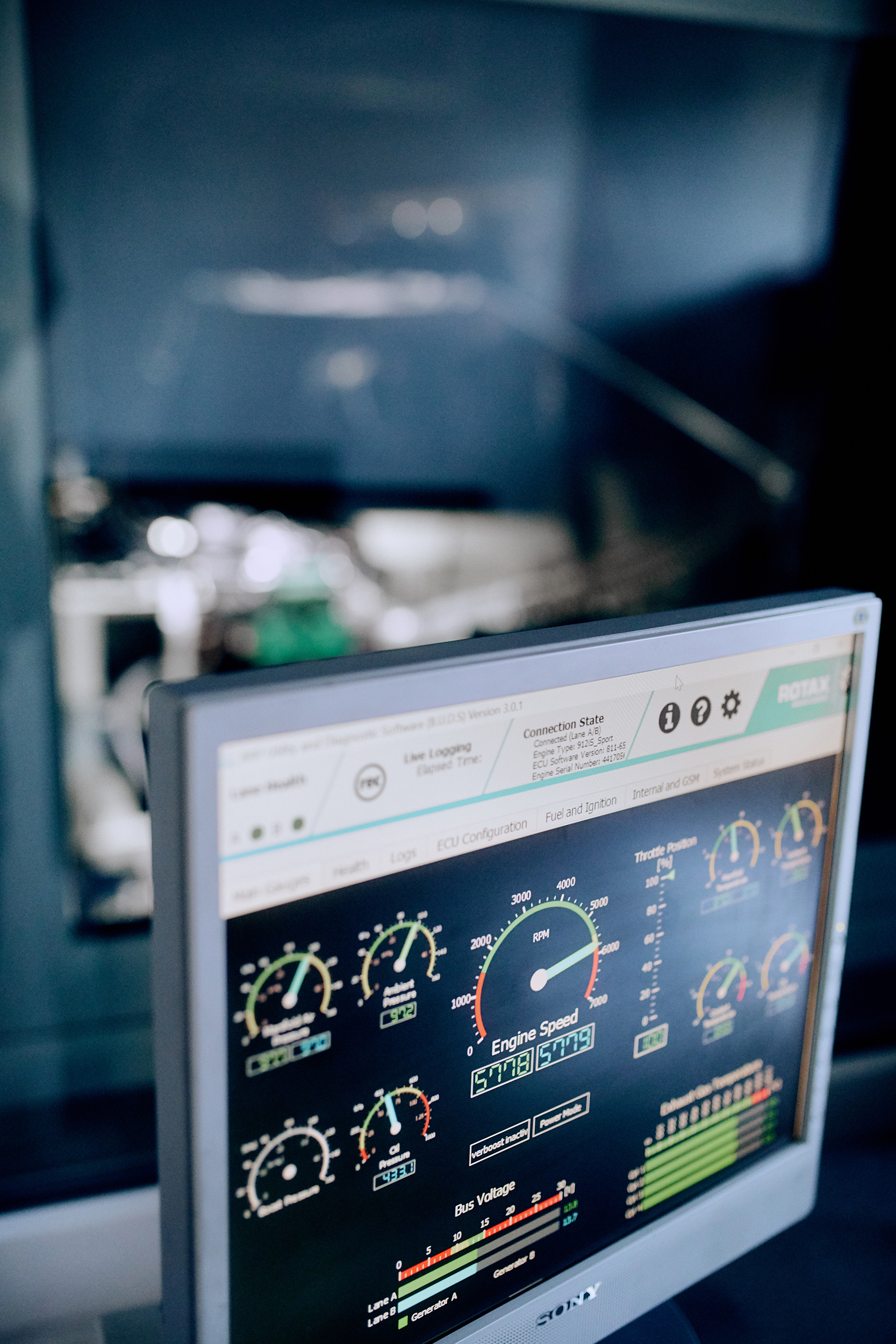Injection Technology

You set requirements.
We innovate.
Cleaner, greener, and smarter.
Our expectations of the aircraft engines we rely on to take us to the sky evolve at pace with the technologies around us. Our research & development team focuses on advances that not merely take our engines to the next level but open the way for generations of ever-smarter and more connected innovative ideas.
Repeatedly recognized with the Aerokurier Innovation Award, our injection technology redefines the small four-stroke piston engine and its applications. This electronic fuel injection concept enables a leap in fuel efficiency, safety, and performance while cutting running costs, from maintenance and repairs to fuel consumption. Designed as an enabling platform with injection technology, our iS engines are compelling starting points for creative aircraft manufacturers to build new and exciting convenience solutions to enhance the flying experience.
FLY EFFICIENT.
Cost of ownership.
From ECU to EMS, from transient engine behavior to engine diagnostics, iS technology enables a range of features that add and enhance capabilities while reducing complexity. These features come together to not only reduce the pilot workload but streamline running costs and cut downtime.
Redundant injectors.
Our engine control unit controls fuel injection for each cylinder through two individual sets of injectors. This approach optimizes the air-fuel ratio calibration at all operating conditions and altitudes, boosting fuel efficiency and flight distances.
Fast engine diagnostics.
The BRP Utility and Diagnostic Software (B.U.D.S.) for Rotax aircraft engines is your window into the engine management system. B.U.D.S. gives technicians and engineers the engine diagnostics they need to keep grounding short, preventive maintenance efficient, and aircraft availability high.
FLY GREENER.
Less noise.
With iS technology, your run-up checks are significantly shorter, which, in turn, cuts noise and emissions.
Fewer emissions.
Automation, iS injection technology, and the option to use unleaded automotive fuels allows Rotax aircraft engines to burn cleaner. A cleaner burn minimizes exhaust emissions, making our iS and iSc models the power plants with the lowest CO2 emissions in their class.
Greater fuel economy.
Once you pull the throttle back to below 97% after the start and climb phases, Rotax engines automatically switch to a lean ECO mode for greater fuel efficiency.
FLY SMART.
Intelligent engine control unit.
Electronically controlling the air-fuel mixture, the Engine Control Unit, ECU for short, is implemented redundantly into the Engine Management System (EMS) to ensure a higher level of safety.
Digital engine health monitor.
The BRP Utility and Diagnostic Software, B.U.D.S. for short, serves as a digital health monitor for your Rotax aircraft engine.
Enhanced system interaction.
The CAN aerospace-based databus facilitates the interactions of avionic systems. CAN lays the groundwork for various digital solutions like interfaces to flight displays, digital data analysis, and smart and connected services.
Insight into engine status.
Controlling ignition and air-fuel mixture, the Engine Management System (EMS) supports the digital display of engine status and details right there in your cockpit.
FLY SAFE.
Safer in cold weather.
iS injection technology improves the start behaviour in cold weather and eliminates the risk of carburetor icing.
Engine management.
The Engine Management System (EMS) controls ignition and air-fuel mixture electronically. We implemented the EMS redundantly to ensure a higher level of safety and designed the system to be single and multiple fault-tolerant.
CAN aerospace-based databus.
This standard of a Controller Area Network (CAN) data bus system supports the network of airborne systems. It is based on a Line-Replaceable Unit (LRU) concept to share data across CAN, ensuring smooth and standardized interoperability between CAN-driven aircraft systems and the monitoring of the engine management system (EMS) with its sensors and actuators.


